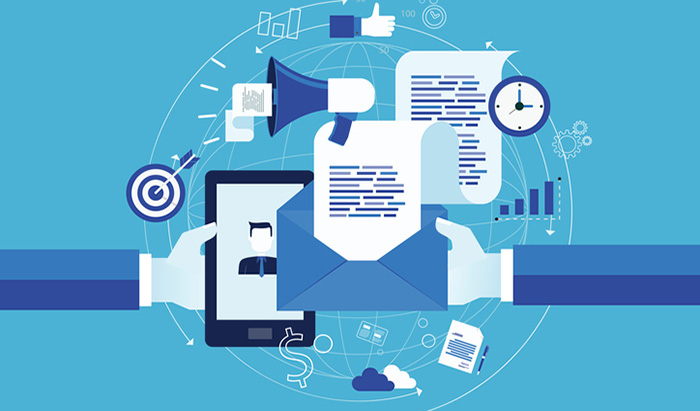A/B testing, also known as split testing, is a powerful technique for optimizing various aspects of email marketing. By comparing two versions of an email to determine which one performs better, you can gain valuable insights into how different elements affect your email's performance. One of the critical areas where A/B testing can have a significant impact is in improving your email's spam score and deliverability rate. Here’s a comprehensive guide on how to leverage A/B testing to enhance these crucial aspects of your email campaigns.
Understanding Spam Scores and Deliverability Rates
Before diving into A/B testing strategies, it’s essential to grasp what spam scores and deliverability rates mean. Spam score is a measure used by email service providers (ESPs) to assess the likelihood of an email being marked as spam. It considers various factors, such as content, sender reputation, and email structure. Deliverability rate, on the other hand, refers to the percentage of emails successfully delivered to recipients’ inboxes rather than their spam or junk folders.
Both spam scores and deliverability rates are crucial because they directly impact the effectiveness of your email campaigns. A high spam score can lead to your emails being filtered out or sent to the junk folder, reducing engagement rates. Similarly, a low deliverability rate means that a significant portion of your emails never reaches the intended recipients, diminishing the overall success of your campaign.
Setting Up A/B Tests for Spam Score and Deliverability Rate
To use A/B testing effectively to improve your email’s spam score and deliverability rate, follow these steps:
1. Identify Key Variables to Test
Start by identifying the elements of your email that could impact its spam score and deliverability. Common variables to test include:
- Subject Lines: The wording, length, and use of special characters can influence whether your email is marked as spam.
- Email Content: Test variations in text, HTML formatting, and the inclusion of images or links.
- Sender Reputation: Experiment with different sending domains or email addresses to gauge their impact on deliverability.
- Email Frequency: Assess how the timing and frequency of your emails affect your spam score and deliverability.
2. Create Test Variations
Once you’ve identified the key variables, create different versions of your email that incorporate variations in these elements. For example, if you’re testing subject lines, create two versions with different wording or structure. Ensure that each version is identical in other aspects to maintain the integrity of the test.
3. Segment Your Audience
Divide your email list into segments to ensure that each version of your email is sent to a comparable group of recipients. This segmentation helps to control for external factors that could skew your results, such as different engagement levels or demographics.
4. Monitor Spam Scores
Use spam testing tools and services to analyze the spam score of each email version. These tools assess various aspects of your email, such as content, headers, and formatting, to provide a spam score and suggestions for improvement. Compare the spam scores of the different variations to determine which one performs better.
5. Track Deliverability Rates
Monitor the deliverability rates for each version of your email. Most ESPs provide analytics that show how many emails were delivered, opened, and clicked. Compare these metrics to assess which version has a higher deliverability rate and determine if there are any patterns associated with the variations you tested.
Analyzing Results and Making Improvements
After conducting your A/B tests, analyze the results to identify which variations had the most favorable impact on your spam score and deliverability rate. Here’s how to interpret your findings and make data-driven improvements:
1. Assess Spam Score Improvements
If one version of your email has a significantly lower spam score, examine the differences in content, formatting, and subject lines. Identify which elements contributed to the lower spam score and apply these insights to future emails. For example, if a specific subject line or content style resulted in a better spam score, incorporate those changes into your email templates.
2. Evaluate Deliverability Rates
Compare the deliverability rates of each email version to determine which performed best. If certain variations consistently achieve higher deliverability rates, analyze the content, design, and sending practices associated with these versions. This analysis can help you understand what factors contribute to better deliverability and guide your future email strategies.
3. Refine Your Email Practices
Use the insights gained from A/B testing to refine your email practices. Implement the successful elements from your tests across your email campaigns to improve overall performance. For instance, if you found that emails with shorter subject lines had better deliverability, adopt this approach in your future campaigns.
Best Practices for A/B Testing in Email Marketing
To maximize the effectiveness of A/B testing for improving spam scores and deliverability rates, follow these best practices:
1. Test One Variable at a Time
To ensure accurate results, test only one variable at a time. Testing multiple variables simultaneously can make it challenging to determine which specific change influenced the outcome.
2. Use a Large Sample Size
Ensure that your test segments are large enough to provide statistically significant results. Small sample sizes can lead to unreliable conclusions and may not accurately reflect the impact of the changes you’re testing.
3. Continuously Monitor and Adjust
Email marketing is an ongoing process, and what works today may not work tomorrow. Continuously monitor your spam scores and deliverability rates, and regularly conduct A/B tests to stay ahead of changing trends and regulations.
4. Incorporate Feedback
In addition to A/B testing, consider gathering feedback from your recipients. Surveys and feedback forms can provide valuable insights into how your audience perceives your emails and help identify areas for improvement.
A/B testing is a vital tool for optimizing your email campaigns and improving your spam score and deliverability rate. By systematically testing different elements of your emails and analyzing the results, you can make data-driven decisions that enhance your email performance. Implementing the insights gained from A/B testing will help you create more effective emails that reach your audience’s inboxes, ultimately leading to better engagement and success in your email marketing efforts.

%20(1).jpg)
.jpg)









 English (US) ·
English (US) ·